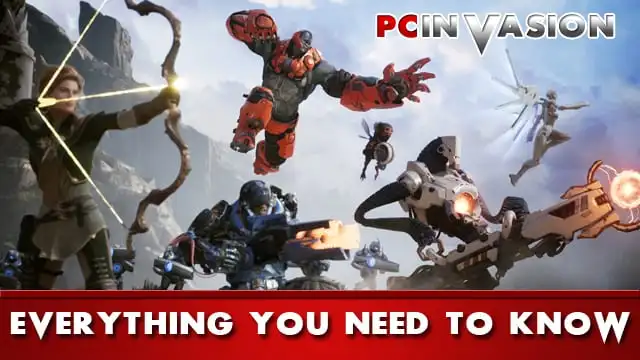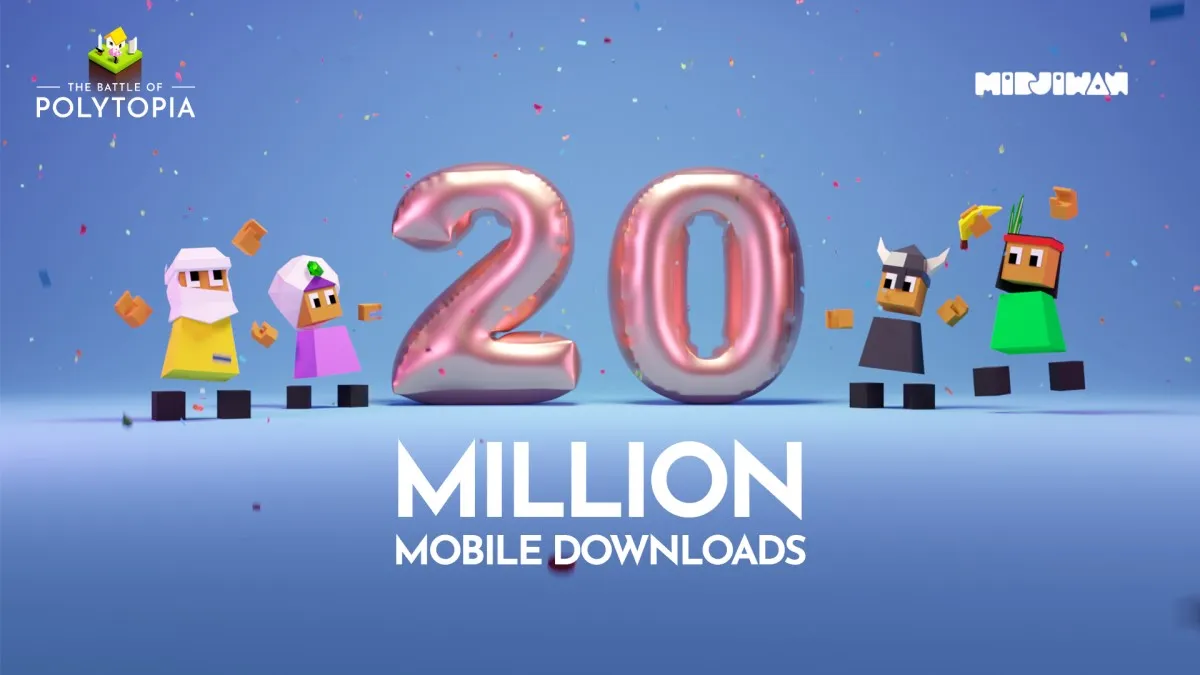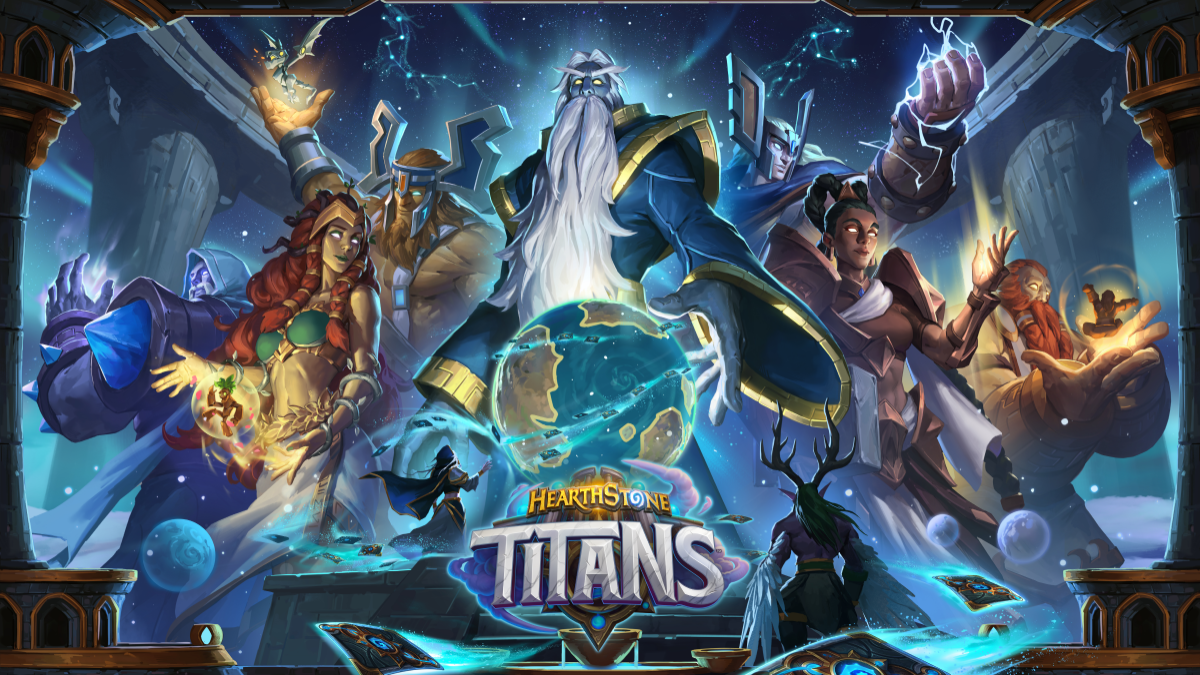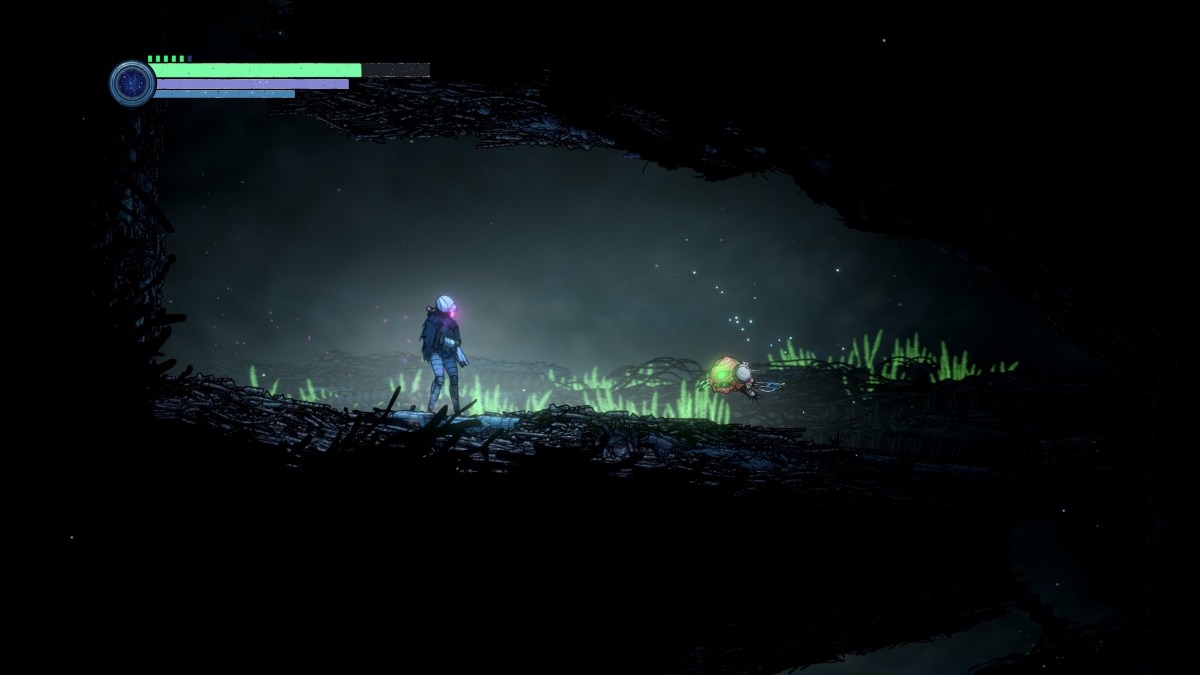Regular readers of PC Invasion will now we’ve been following the development of Epic’s new MOBA Paragon very closely for quite some time and the game has undergone some major changes throughout the testing process.
We wanted to find out where the game is heading once the open beta test kicks off on a couple of weeks so we caught up with Epic’s Steve Superville, the creative director for Paragon.
You can read the full interview below or listen to the audio. We’ll be sending a few more questions over to Epic as follow up so feel free to chip in via the comments below.
[powerpress]
PC Invasion: We’re here with Steve Superville. Steve, can you tell us a little bit about your position at Epic and what your work is on Paragon?
Steve Superville: Sure. I’m the Creative Director for Paragon, and my responsibility is basically everything in the game that’s not HR or publishing. All the design stuff, everything the players interact with, is ultimately my responsibility.
PCI: A lot of people maybe don’t know what Paragon is, so can you give a brief explanation for anybody who’s never seen Paragon or played it.
SS: Paragon is a fully 3D MOBA [Multiplayer Online Battle Arena], where we took our love of action games and what we love about MOBAs, what makes MOBAs magic, and partnered those things together. In the hopes of bringing out the most competitive MOBA experience that we possibly can; and do it in a way that values all types of players. So players who have MOBAed before should be able to come in and use their knowledge, and be confident and masterful. But players who have never played a MOBA before can come in with an action, shooter-ey type background and find that those skills transfer also, as they learn the MOBA ruleset.
PCI: I’m in the camp where I don’t really like MOBAs, but I love Paragon. So what’s your main goal with it, is it really to try and get a crossover with a shooter type element with a MOBA element? Has that been the goal from day one to try to create something people can relate to, no matter what their gaming background?
SS: I’m going to give you two answers. One is the elevator pitch, and one is the sort of higher level philosophical purpose behind Paragon.
The elevator pitch part is that when we were doing this project we realised that there was a promise that other MOBAs offered players. Lots of us in the office were MOBA players and we spent a lot of time playing competitive games, trying to figure out what we wanted to make. We didn’t set out to make a MOBA, we set out to figure out the competitive landscape and then figure out wanted to do from there. So as we were investigating we saw a lot of CG trailers that these MOBA games put out, offering a heroic fantasy that players would be experiencing. And then the gameplay was vastly different. The games are great, but those two things are very disjointed.
We thought ‘what if we can make the CG trailers of other MOBAs a reality in gameplay?’ That’s something we found has a lot of appeal to players who haven’t MOBAed before, because they haven’t been able to get through the top-down, clickity-clickity, type of thing where you’re the puppet master, far from the action. Your decisions matter, but the impact of your actions don’t really register on the instinctual, human level. When we set about making Paragon, our pedigree at Epic Games is making impactful player experiences, so we wanted to bring these two things closer together. I’m surprised and delighted that folks like yourself who have rejected MOBAs before have found something to latch onto in Paragon.
The philosophical reason, and the reason I think a lot of people latch on to MOBAs in general and hopefully Paragon specifically, is this idea of a fundamental human need that people have to create stories and adventures together. MOBAs are distinct from shooter games where … in a lot of shooter experiences players have accidental teamwork, they’re in the same space, roughly pointing in the same directions and sending bullets that way, but they don’t actually play off each other. MOBAs have this magic where the story of combat is built out of player directions, both team-mates and opponents.
You get this unpredictable combat narrative that comes out of putting ten superheroes, all with asymmetric powers, inside the same space. With a life-expectancy that’s long enough for me to see you rip a rock out of the ground and throw it through the air, while I’m already starting to make predictions about how I’m going to react when that rock hits and stuns the person you’re targeting. Or when it misses, and what that person is going to do. So you have the building blocks of player abilities, and the amount of space a game gives you, to build this fantastic story that creates a bond between players. When something like that happens, you want to go and tell your friends. That’s the story your talk about. It’s a very powerful human thing that MOBAs offer over lots of other game types. That’s a kind of nerdy, academic answer, but as Creative Director I feel like one of my goals is to identify the core, human need that we can design a game around and that players will respond to.
Minecraft, for example, is all about creativity. People have built an entire game around that. For Paragon it’s this idea of needing to bond with other people. But we have to do that inside of combat.
PCI: Having played with other people for a number of months and seeing comments from the community, they’re split on where the game is going. How are you guys trying to address the two camps; the people who want Paragon to be like Dota 2 or League of Legends, and the other camp who want it to be something different and unique? How do you balance those views and keep each side happy?
SS: To be candid we are feeling our way towards the right thing. Our operating philosophy is that the best games are made as a partnership between devs and community. We’ve banned the phrase “we’re making a game that we want to play,” because we’re making a game for a large group of players who are strongly opinionated and dedicating their playing time to us.
At the same time we can’t design by committee, and so it very much is a hard challenge to figure out the best path forward. And we’re doing that by experimenting. We’ve tried our best to be transparent, open, and honest with our community about this being an actual beta. We are doing grand experiments with our players. Telling them exactly what’s coming. Sometimes better than others, we’ve dropped the ball occasionally there. But our goal is to tell them what’s coming, why it’s coming, listen to their feedback, and figure out the next thing.
PCI: That in itself obviously can cause problems if you look at the v26, v27 patches. There’s been quite a difference in the gameplay mechanics, which I’ll touch on in another question. But do you think you’re finding that sweet spot now, is it close to that?
SS: We’re getting there. I’m a designer, so I’m never happy. We know there are different groups of people that are looking for different things, and my goal is to figure out the pieces that are universal to all humans and nail those. After that, people are going to have different flavours.
We consume all the feedback that is presented to us. It doesn’t really matter where we find it, we seek it out on YouTube, or Reddit, our forums, or Twitter, Instagram, wherever. And there are people who have their personal tastes or preferences, they love or hate a particular hero. Stuff like that is actually encouraging. If we’re doing our job right there are characters people will gravitate towards, and they’ll fall in love with a particular type of hero or group of heroes, but despise other ones. That creates an environment where everybody has an opportunity to play within their personality and find a spot where they can contribute to the team. Rather than lots of other games which say “well if you want to be good, play like that guy”.
So when we hear things like “I love where casters are” or “I hate where casters are”, we find that it’s a healthy place to be. It means we have both the opportunity to grow and captured the hearts and minds of some of our players. Our constant mantra has been we’re feeling our way through this along with you, but stick with us because this is an adventure not a one-stop destination.
PCI: I’d like to ask you about match length. As patches have gone on (v26/27), we’ve seen match length really vary depending on what’s happening with Inhibitors, card points and things like that. What are you looking for with match length, what is the point you’re trying to hit?
SS: Right now our goal is for the median match length to be at the 30-35 minute mark, and we’re a bit off that. We were closer with the previous patch at around 37 minutes. Now we’ve crept back up to the 39 minute range, and we’ll keep working at bringing that down. 75th percentile should be 40-42 minutes, and the 90th percentile should be about 50 minutes. Our goal is for matches to be shorter. We feel that the 30-35 minute match is the sweet spot. At the same time MOBAs are strategic and a pendulum by nature, it’s very tug of war. So what we don’t want to do is arbitrarily end a match that’s a great back and forth. But we know that some matches in the hour plus range are too long, and we need to find ways to abbreviate those.
PCI: What is it you’re specifically looking at right now? Is there something you’re trying to target to get match lengths to that point?
SS: Yes. We’re targeting things like player damage, life expectancy, tower health, minion movement speed. We’re looking at minion damage to towers. We have a lot of knobs. One of the challenges is, because we don’t have a fully established rule-set yet, we’re experimenting with the best changes to make us a highly competitive MOBA, and, at the same time, trying to keep match lengths down. Sometimes those two things conflict.
For example, the transition from v26 to v27 we made some changes to damage numbers so that players had a higher life expectancy. We expected players to adjust their behaviour more quickly than they actually did, by focusing on objectives more. But they continued to be fearful of towers, because when towers shoot you they hurt. That caused match lengths to creep up, so we made some adjustments in v28 and the average times came down by ten minutes. For our changes in v29, we made more adjustments for the health of player combat, but that has allowed match length to creep up by two or three minutes again. It’s going to be a constant tug of war until we’re out of beta. As the game changes, there’s always unexpected fallout.
PCI: I’m going to ask you about one of the most contentious topics; the travel mode and auto-sprint. Travel mode has now gone, and we moved to the auto-sprint model which a lot of people just don’t like at all. Others, like myself, like the speed of the game. What is your plan for this? As I understand it, auto-spint is going to go completely, is this actually going to happen?
SS: Right, so, yes. It’s going to happen. The time-line is the hard part. We’re doing tests internally to figure out the best way to remove auto-sprint or travel mode, it’s essentially the same thing, from the game. I’ve done my best to highlight the reasons for that.
Our challenge is we currently have a map that all players play in, and whatever changes we make have to keep the game fun. We’ve tried a couple of things that have not worked and we’re continuing to experiment. The initial thoughts we put forward didn’t pan out, and that’s one of the dangers of doing a ‘live’ game in full view of the community. When you say you’re going to do something and then try it internally and it falls on its face, you’re left a little stuck. We fully intent to remove travel mode or auto-sprint from the game and we are diligently powering towards what we hope is a good solution. We just haven’t got to a spot where we’re confident talking about it yet.
PCI: What, from the dev team’s point of view, didn’t work? What is it that didn’t work for you guys?
SS: Flat out removing travel mode from Agora [the game map] doesn’t work. The space is so incredibly big that without the ability to move at a faster speed matches can’t end. You’ll wipe a team somewhere at your base, and without a travel mode it takes so long to get to the other side of the map that they’ve respawned. One of the things we’ve avoided doing is just tripling the amount of time that people stay dead, because that’s not fun. So we’re trying to find other things that we can do to allow transitions across the map to happen without requiring people to be dead.
PCI: Could that be something like a card you have to use, or a cooldown, or even just increase the base movement speed? Are these things you’re looking at?
SS: Yes. All of those things are things we’re actively looking at.
PCI: From my point of view as a player, if travel mode is removed and the movement speed stays as it is, I put the game down. Mainly because the thing that attracts me to Paragon, and I think is the same for a lot of players, is the speed. It’s hitting that spot, the MOBA elements with the action elements; and when you remove that speed and make a character less maneuverable around a big play area, then it becomes something else. I think a lot of people are concerned it’ll end up more like a standard MOBA, which, for someone who’s not a big MOBA fan, that would be sad to see.
SS: I think people … I agree, that is a concern. I think people generalise their dislike of traditional MOBAs to the speed. I’m not sure that’s entirely true, and that’s the type of thing we’re working on experimenting with. Lots of times, in the conversations I’ve had at shows like PAX, they often start with that idea that they like it because it’s faster. The sense of speed is relative. The characters in League of Legends, Dota, or Heroes of the Storm actually move a bit faster than characters in Paragon. It’s just that relative to the play space or your shooting distance it feels different because your camera perspective is vastly different. So there’s a lot more that fits into our decision making than simply the pure speed.
One of the things we know we need to maintain is that ability for people to build that combat experience that I talked about earlier. When we talk about speed, people tend to move between both movement speed of themselves, movement speed of a target, life expectancy of a target, how long combat lasts, and also the length of a match. All of those things are a factor in player satisfaction. It’s a very hard problem to juggle, as you can imagine.
PCI: I think the fear from most people is getting a 3D League of Legends or Dota 2. And I think a lot of people playing this and enjoying it don’t want to see that, they want to have something different. I guess that’s the concern with the removal of travel mode from the game.
SS: Yeah, I understand that. I would say that we’ve hopefully delighted and pleased them this far, and we’ll continue to try to do so in the future.
PCI: How are you approaching the hero balancing? Obviously, that becomes different as more heroes get added, but how is the team approaching it?
SS: Right now we are in the foundation building stage for balancing heroes. We are balancing largely by class to try to get to a spot where we are certain of the way classes relate to each other and their roles as games progress. Early, mid, late game and the different responsibilities that are available on the map.
Once we get through that we’ll be able to transition to individual hero balance. I know part of the frustration of the community is that we should be balancing heroes individually, and we ultimately agree. It’s just not the current place that we’re at, because we’re learning how to build a MOBA, setting up our MOBA systems, and we’re trying to build things in a way that will allow us to quickly tweak the game as problems show up.
As an example, players want burst casters. We fully intend to add burst casters. Because we haven’t talked about it people assume we’d never want to, but we do. It’s just right now we don’t have a burst caster and as we release new heroes they will start to show up. The analogy I’ve used when talking with players on the forums or twitter or whatever is that we’re building a very tall skyscraper and each hero is a new story on that skyscraper. If we don’t get that foundation solidified quickly, then the higher the building gets with each new hero, the shakier it is at the top. So we’re focusing our time on that foundation stuff. It’s a less sexy place to be in terms of design, but it’ll have the best outcome in the long run.
PCI: Matchmaking is another topic that comes up quite a lot. I’m level 41 right now but sometimes end up in a match with somebody who’s played about eight games. What are you doing to improve the matchmaking?
SS: We had a big step forward in improving matchmaking when we did draft mode. One, we took away a lot of the restrictions that the quick-match imposed on the matchmaking algorithm. Restrictions like when we release a new hero, everybody wants to play as them, but you can only have one per team. When you have greater than x percentage of your population searching for that one hero it’s very hard to build a team of five people. The minute you have more than 20% of your population looking for one slot, you simply cannot build a team efficiently.
So draft mode helped with that. It also put team composition in the hands of players. When there was a bad team composition, there could at least be a conversation between players in the draft lobby as people pick things. Rather than ‘Epic screwed me because they put five rangers on my team’. We were also able to remove a restriction we had in our code where social parties could not be on the same team. You can now have a party of two and a party of three, or two/two/one, whatever, on the same team. And that helps matchmaking times significantly.
Past that, one of the things we’re doing is re-writing the entire back end of the matchmaking system. Right now we are client-side matchmaking, where each client ‘advertises’ that they are looking for a match or party. That doesn’t allow us a lot of control. What we’re working on is a unified, monolithic matchmaking server that is not client-side based. It’s basically registering yourself with a server saying you’re looking for a match, and that server knows all and is able to do a much better job grouping people together. When we say we’re in beta and not afraid to do full re-writes when it’s the right thing to do, well, that’s one of those full re-writes.
PCI: The PC and PS4 player issue is one that rages on continuously. Are you at any point going to offer an opt-out option so PC players can just play with other PC players, like in games like Rocket League?
SS: We don’t know. What we’ve seen is that as people play they get up to speed and their MMR [matchmaking ranking] gets up to where it should be. One of the largest challenges with our console players is that they just tend not to be MOBA-familiar, so as they learn the game they start doing MOBA things like warding, and picking a lane, and rotating team fights, pushing towers. Whereas early on they just try to team deathmatch. So we don’t believe that input device is a limiting factor for how players play the game. It tends to be experiential growth, and PS4 players start with a deficit compared to PC players.
So … maybe. But there’s nothing we’ve seen right now that makes us want to commit to splitting the population. Partly because the matchmaking times improve for everybody when they play together.
PCI: Do you think that’s a communication issue as well? Not being able to communicate quite as easily on PS4 as you can on PC.
SS: Absolutely, and one of the things I’d love to do to solve that is to introduce VOIP. But that would mean we’d need to do cross-platform and that’s a much harder challenge that simply doing voice on PS4 and voice on PC. A high percentage of our Paragon games are a mix of both PS4 and PC players, party and solo, so we’re doing our best to prioritise that work it’s something we’d like to push towards. Just like we have seamless cross-platform support for purchases and friends lists, stuff like that.
PCI: With the beta just starting, what’s coming up? Is there anything new to look out for, like a new game mode? What’s the future for Paragon in the next month or so?
SS: We are … not a new game mode. We are looking to open the game up and remove the paywall so that people can play together. One of the complaints and requests I’ve seen over and over again is “I’d really like to play with my friend, but my friend is not willing to purchase into Paragon”. It’s a big step to simply remove that paywall and open it up to the world, but after that … we have tons of things we’re working on. Heroes, skins, cosmetic things that we’re adding to the game. Card crafting is coming up, not for the open beta, but hopefully very soon after that as we work through some final polish passes. We’re going to just keep grinding forward, adding things to the game.
PCI: Okay, I think my time for questions is up. Thanks Steve.
SS: Thanks Paul.












Published: Aug 9, 2016 03:21 pm